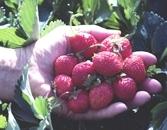There’s a challenge! How to do it? Stealth, education, marketing, example. Which do you choose?
 Should we hide fruit and vegetables in meals so children eat them without realising as suggested in American Journal of Clinical Nutrition recently or use marketing to improve the image of healthy food, employing packaging and advergames? Or in fact should we just try to lead by example and make sure the home and school environments help children establish a healthy diet habit at a young age. Last but not least, does education play a role?
Should we hide fruit and vegetables in meals so children eat them without realising as suggested in American Journal of Clinical Nutrition recently or use marketing to improve the image of healthy food, employing packaging and advergames? Or in fact should we just try to lead by example and make sure the home and school environments help children establish a healthy diet habit at a young age. Last but not least, does education play a role?
I’d love an answer to this one!
Thinking about it, using stealth to get children eating fruit and vegetables doesn’t seem sustainable to me. The recent news about hiding vegetables by basically pureeing them and then adding them to recipes may make meals healthier to start with but if children don’t know they are eating vegetables, they won’t know to seek out those foods and eat them in future. There’s also the issue that hiding vegetables may send the message that they are not good to eat and undermine the whole plan!
A recent issue of Journal of Consumer Behaviour that I summarised for Nutrition and Food Sciences Database discussed how marketing used by the food companies could be used by public health campaigns to increase healthy eating in children and how children view food messages.
Adverts are very powerful and using the techniques dreamed up by the ‘opposition’ seems to be a good idea for public health campaigners. What stood out for me from this journal issue was that fun comes first for kids when they are thinking about food, health is way down the list.
Using gaming, that new addiction amongst kids, to promote healthy food seems to work as does changing the packaging of foods. However when it comes to claiming on the packet that something is healthy campaigners should beware, because that idea seemed to backfire. Apparently, and this goes for grown-ups too, if you are not concerned about your health, a package advertising that its ‘good for you’ may put you off a purchase. The perception is that taste is compromised in ‘healthy’ food.
What about using education and example to improve healthy eating? 'Do as I say not as I do' doesn’t work – children notice. Leading by example is hard… but it does work, there are a lot of studies showing how important what parents do is to smaller children’s actions and how habits formed early persist. Unfortunately nothing lasts for ever and after a certain age what friends do becomes important and an adverse environment outside the home can easily undermine what a parent does at home or what is taught in school.
So where are we then? – a bit of example, an understanding of kids' motivations (and some fun!) and a bit of turning the tables on those big advertising campaigns. The combination of all these could help get all of us eating healthier.
Further reading
News release. Hiding vegetables in kids' foods can increase vegetable intake
Journal article. Hiding vegetables to reduce energy density: an effective strategy to increase children's vegetable intake and reduce energy intake
Journal issue. Journal of consumer behavior Special Issue: Food, children and marketing
Related News & Blogs
COVID vaccine: to jab or not to jab
In the midst of the COVID-19 pandemic, vaccination has been hailed as the light at the end of the tunnel. However, even though the UK is one of the top countries in the world for the number of vaccinations doses administered, there is mistrust an…
30 March 2021


